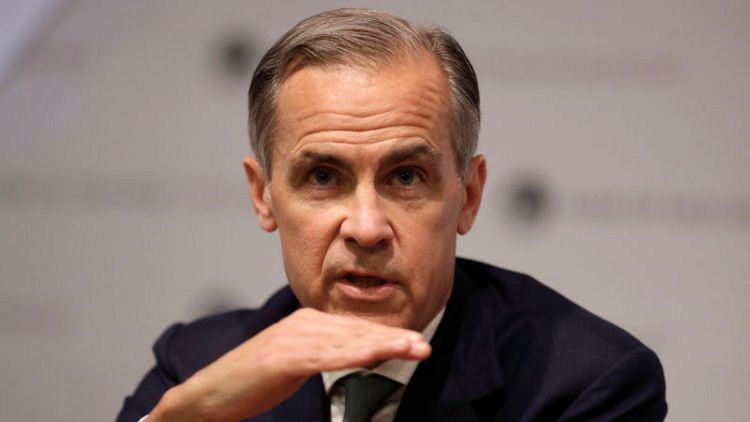By David Milliken
LONDON (Reuters) - Changes in the yield curve - a measure of the gap between long- and short-term borrowing costs - appear to be regaining some of their power to forecast economic developments in the United States and Britain, Bank of England researchers said on Tuesday.
Historically a negative yield curve - when it is cheaper for a country to borrow over the long than over the short term - has been regarded as a harbinger of recession, especially in the United States.
Such a pattern reflects expectations in financial markets that a central bank will cut interest rates in response to an economic downturn.
The correlation between yield curves and economic growth appeared to fall apart after the 2008 financial crisis, but BoE staff said there were recent signs that it could be strengthening, though it remained weak.
"While the warning sign from the yield curve slope should be taken with caution, it should not be discarded completely," BoE staff Sebastian Vismara and Iryna Kaminska and Bocconi University's Carlo Favero said in a BoE research blog post.
However, the BoE research showed that one of the most commonly used metrics - the difference between yields on two-year and 10-year British government bonds - had not recovered the forecasting power it lost after 2008.
This spread fell to its flattest since September 2008 last week.
BoE Governor Mark Carney said in May that markets had underestimated the BoE's willingness to raise interest rates, and that the flatness partly reflected Brexit jitters - which could clear up if a deal is done between London and Brussels - as well as global trade tensions.
But other measures of the yield curve - in particular the gap between a central bank's rates and interest rate swaps showing expected borrowing costs in one year's time - were becoming more correlated with changes in economic growth.
The BoE staff said part of the problem with traditional measures of the yield curve was that they were sensitive to changes in term premia, or the extra compensation lenders want for longer-term lending, as well as to changes in expectations for central bank base rates.
Shifts in term premia particularly muddied the picture in Britain, and had also been a problem in the United States. For example in the early 2000s, foreign investors' demand for U.S. Treasuries flattened the yield curve, giving a misleading steer about the country's economic prospects.
More recently, term premia in the United States had become more informative, as they captured market expectations for the end of quantitative easing in response to a stronger economy.
BoE research does not necessarily represent the view of BoE policymakers.
(Reporting by David Milliken; editing by John Stonestreet)



